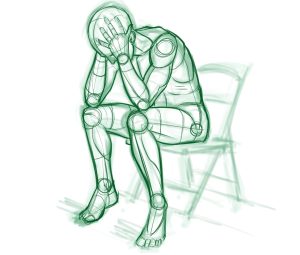Headache vS migraine
Experiencing discomfort in the head is very common in our lives. According to data from the World Health Organization, approximately 50% of people have experienced some sort of head discomfort at least once within the past year, and 1.7~4% of adults suffer from headache disorders for 15 or more days every month. In most cases, the discomfort will be mild and will improve as time goes on or when rested. In some cases, the symptoms can be severe and cause disturbance in our lives. When discussing this discomfort in our head, the words “headache “and “migraine“ are often used interchangeably. But are they truly the same? If not, what sets them apart?
Difference between Headache and Migraine

Migraines and headaches are both forms of head pain, yet they possess distinct characteristics that differentiate them. Here are some of the key differences between migraines and headaches:
Common Headache:
- Typically involves a persistent, dull ache or pressure.
- Usually affects both sides of the head.
- Pain is milder and is often described as a tightening sensation around the head.
- Duration can range from 30 minutes to several days, but most tension-type headaches resolve within a few hours.
- Common triggers include stress, lack of sleep, dehydration, or muscle tension.
- Responds well to over-the-counter medication, allowing individuals to carry on with their daily activities, albeit with reduced productivity.
- The most prevalent type is tension-type headache (TTH).
Migraine:
- Typically manifests as a more intense, throbbing, or pulsating pain.
- Usually localised to one side of the head.
- Pain is more severe and debilitating, often accompanied by symptoms such as nausea, vomiting, visual disturbances (aura), and heightened sensitivity to light, sound, or smells.
- Lasts longer than most headaches, typically between 4 hours to 72 hours if left untreated.
- Triggers can vary and may include hormonal changes, certain foods such as chocolate, cheese, or caffeine, environmental factors, bright lights, strong odours, and stress.
- Some individuals experience auras preceding a migraine, which may involve visual disturbances, tingling sensations, or difficulty speaking. However, not everyone with migraines experiences auras.
- Often requires specific migraine medication and may necessitate rest in a dark, quiet room with minimal triggers during severe episodes.
- More prevalent among females than males, with a ratio of about 2:1, due to hormonal influences.
From the above distinctions, it’s evident that while migraine is a type of headache disorder, it exhibits greater severity and necessitates more attention due to its disabling nature.

How TCM can help with Headaches and Migraines?
According to Traditional Chinese Medicine (TCM) theory, energy flows continuously throughout the body, with the head considered the focal point of all the Yang energy. If this flow is obstructed, it can cause an imbalance, leading to discomfort or dysfunction in the affected body part — one of them being headaches.
There can be various causes of migraines, whether external factors such as wind or internal obstructions. Clinically, migraines are often closely associated with factors such as stress, anxiety, and emotional issues, which can disturb the function of the liver channel energy flow. In TCM, liver energy represents the ability to regulate energy flow within the body and is closely tied to our emotions. When the body is stressed, it can cause disturbances in the liver channel, leading to unsettled “fire” within the liver channel and the rise of restless energy, particularly in the gallbladder channel (which are both connected by the wood element), which runs along the side of the body and head.
In acupuncture, we can help you manage the headache and migraine pain by locating the place of energy obstruction or imbalance. We can help you bring the body into balance by inserting thin, sterile needles into relevant energy points. If you want to relieve the pain naturally, why don’t you give it a try?
